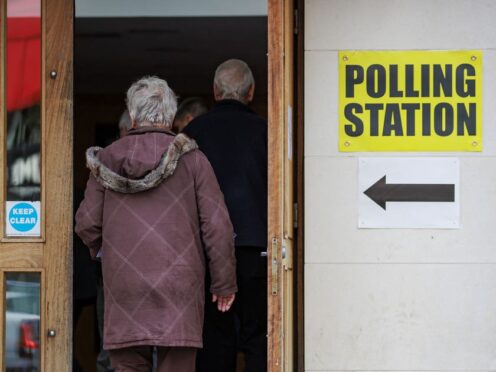
Some 445,000 voters may not have been issued with a ballot paper in the General Election because they did not have the correct identification, polling has suggested.
Of the 2,047 people surveyed by More In Common, 3.2% reported being turned away at least once because they lacked the necessary ID.
Extrapolated across the UK, this would equate to more than 850,000, according to the pollsters.
More than half of these people either gave up or returned and were still unable to vote.
Thursday was the first time in the UK that everyone wanting to vote in person at a general election had to show ID before receiving a ballot paper.
Not all types of photo ID were accepted at polling stations, but among the permitted forms were passports, driving licences or blue badges.
The poll found that a third of people turned away had ID which was not on the list of valid ID, a quarter said the name on their ID was different from that listed on the electoral register, while 12% said they were told the picture on their ID did not match their appearance.
You’ll need your photo ID to vote in the general election today, so don’t forget it! 🪪
Check which forms of ID are accepted: https://t.co/FlGDP2RcYj#GeneralElection2024
— Electoral Commission (@ElectoralCommUK) July 4, 2024
The data, co-ordinated by the Hope Not Hate campaign group, also suggested there was a disproportionate impact on ethnic minorities, who were more than twice as likely to be turned away than white voters.
It found that 6.5% of voters of colour said they were turned away, compared with 2.5% of white voters.
David Weaver, chair of Operation Black Vote, said: “It comes as no surprise that BME communities are disproportionately affected by voter ID requirements.
“At Operation Black Vote, we’ve been engaging with African, Asian and Caribbean communities across the country and repeatedly hear how the system has continually failed them.
“These systematic barriers underscore a democracy that too often works against us rather than for us, highlighting the urgent need for large-scale constitutional reform.”
Alba Kapoor, head of policy at the Runnymede Trust think tank, said: “As we warned, these voter ID laws are discriminatory by design; and must be scrapped.
“They are an attack on the democratic rights of people of colour, and leave people without a say in the running of our country.”
Hope Not Hate’s campaigns director Georgie Laming said it “must be the last” national vote with the ID rules.
“This was a generation-defining election and yet hundreds of thousands of voters were shut out from voting because of confusing and unnecessary voter ID laws.”
Photo ID rules were brought in by Boris Johnson’s government as part of the Elections Act 2022, as the then-government said they were necessary to combat the risk of in-person voter fraud.
The requirements were first enforced at the May 2023 local council elections in England.
Mr Johnson was turned away from a polling station after forgetting to bring a photo ID in May’s local elections.

Enjoy the convenience of having The Sunday Post delivered as a digital ePaper straight to your smartphone, tablet or computer.
Subscribe for only £5.49 a month and enjoy all the benefits of the printed paper as a digital replica.
Subscribe